IPEM Paris 2023 – The Daily Spin – September, 20th
IPEM Paris 2023 – The Daily Spin, September 20th
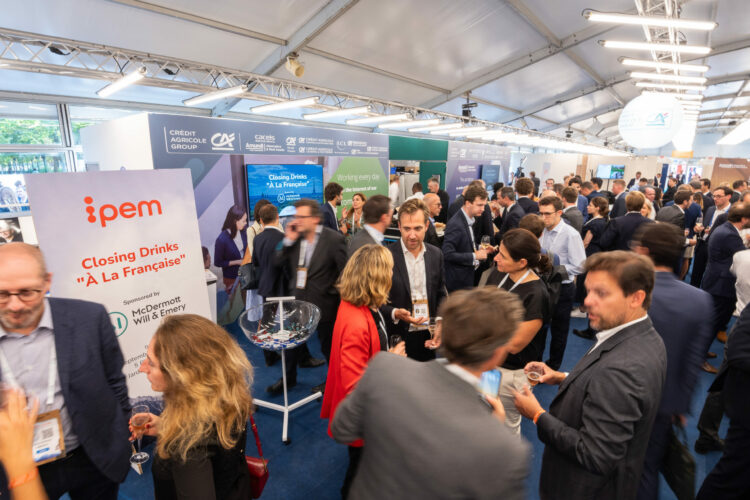
Find below the full Photo Gallery of DAY 2
Find below all the TV Studio Interviews of DAY 2
Day 2 of IPEM Paris 2023 saw the focus of the main conference switch focus to performance from the perspective of LPs under the sub-theme of “Recalibrating the performance equation”. The session kicked off with a fireside discussion, “In search of performance”, featuring James Zelter, Managing Partner, CIO & Managing Director of Credit at Apollo Global Management.
Apollo is one of the biggest private markets investors with $600 billion in AUM. Its credit business is the main driver of that growth, with over $400 billion in AUM. Zelter spoke about various aspects that differentiate its model. One is the permanent nature of half its assets. “We have alignment, we eat our own cooking,” he said. “The second is the low cost of those assets. That makes us much more relevant in terms of lending and providing companies with solutions.”
With the ownership of Athene, its retirement services business, and Athora in Europe, Zelter spoke out about how rising interest rates have helped it create a massive credit business focused on investment-grade assets. “We’re actually taking less risk today by investing in a very high-quality portfolio. And that’s a story that now the marketplace is understanding a bit better. The idea that you can make 10 to 12% at the top of the capital structure was not part of our business plan.”
Zelter explained that going forward, the firm sees a massive global opportunity with respect to retirement services. “We’re trying to create a variety of solutions and products to empower retirees around the globe. That’s what Athene does in the US with the fixed annuity business. That’s what Ahora does. And certainly, we’ve been very public about our desire to expand that playbook around Asia and the rest of the globe,” he said.
He was quick to dismiss the idea that the halcyon days of private equity were over, emphasizing how important the buyout industry is to private credit. They are agents of change, he said, and when you look at strong performance in direct lending, sponsored deals account for two-thirds to three-quarters of the marketplace.
LP-GP convergence
For LPs that seek more innovative approaches to private markets programs, there can often be many bumps in the road. Structural reform within institutions is hard, slow, and ultimately, can be a drag on performance; the opposite effect of why LPs might choose to go down such a road.
Gabrielle Rubenstein is co-founder of Manna Tree and is also a trustee on the board of the Alaska Permanent Fund, giving her a unique position as both a GP and an LP. Speaking on the panel “How LP-GP convergence is changing the game of private equity – and what happens when aspiration meets reality,” she recalled: “The governor of the state called me and we figured out that there were tools of innovation you could use within public-private partnerships within the state of Alaska. And then he called me one day and he said, I’d like to put you on the permanent fund board.” She went on to explain how, during her first board meeting, she found out that the sovereign wealth fund was losing talent to the likes of CalPERs and Wafra. “I said, ‘Give them spot bonuses. And the room went silent.”
There is pressure to be able to continue to innovate and it requires having the right governance structure, and compensation structure. Attracting and retaining top talent to run private equity programs is something that institutions have to consider carefully as part of their long-term objectives. Innovation is also vital, as Steve Moseley, Managing Director, Wafra commented. Previously, he worked at the Alaska Permanent Fund. “They introduced an incentive compensation program that’s a little bit more commercial, which kicked in about four days after I left.”
“One of the things we did was to launch a program designed to give us some scale and put meaningful amounts of capital behind emerging and fast-growing managers. We call that platform Capital Constellation. We hired Wafra in New York to do that work, where I now work. We teamed up with a couple of other large public sovereigns and pension funds and I don’t see that happening enough,” explained Moseley.
Jim Pittman, Head of Private Markets Multi-Management at British Columbia Investment Management Corporation talked through how the pension plan started to invest directly in operating companies seven years ago. It was by doing the first deal, printing the deal, and announcing the deal that allowed BCI to begin attracting talent. “We’re now currently $30 billion invested, $14 billion of which is directly invested alongside our partners. Even as a Canadian pension plan, we had a number of limitations on what we could do, how we were getting paid incentives, etc. There were bumps along the way,” said Pittman.
Know thyself
Moseley summed things up nicely by telling the audience that the first thing they should do, as LPs, is understanding what they would like to achieve, and then overlay this on to one’s available resources. In short, ‘Know thyself’.
“Realistically assess where you have maybe some small, fleeting comparative advantage; like the ability to invest for very long periods of time. Identify the opportunity, be honest with yourself institutionally, and then chase down the resources you need to crush it,” he said.
Rubenstein added: “What I’ve learned is you really want to take a contrarian approach. It doesn’t really have anything to do with AUM, it has to do with do with what others are not doing. And you will get rewarded.”
During the morning sessions, LPs also discussed whether there is likely to be further consolidation among GPs.
Isabelle Scemama, Global Head of AXA IM Alts, speaking on the panel “The $30 T Question: Can Private Markets Continue To Grow And Still Deliver Outzided Returns?” said she expected to see more consolidation “because there is this need for size. Capital raising is facing more constraints and multiples are also adjusting. All of this is creating good momentum and a good environment for consolidation.”
Widening the aperture
This view was further reinforced by José E. Feliciano, Managing Partner & Co-founder, Clearlake Capital Group. In his view, while there will always be room for smaller and niche players that can outperform in private equity, generally speaking, “when you look at the overall market, scale is becoming more and more important. Investors are looking to consolidate their relationships, to have fewer relationships that are broader and certainly larger.”
“We acquired a CLO manager called White Star Asset Management in 2020. We have doubled it from $7 billion to about $16 billion in AUM today. Anything that allows you to have a wider aperture and synthesize and see information coming from different places is actually helpful and additive to the business,” explained Feliciano.
The panel agreed that retail investment is a huge growth market for GPs but there was an acknowledgment that the risks are real, especially in terms of how to manage liquidity. Regulators will put pressure on GPs to find the right solutions to offer liquidity, and consistently.
Scemama commented: “The big risk you have if you don’t control the flow of capital, is to become a forced buyer. And that’s something that will impact performance. The recipe will require dealing and working closely with a distribution network to find a way to control the inflows and the outflows.”
Other panel sessions debated the performance question by focusing on how to select the best GPs in what has become a hugely crowded market (at least until consolidation picks up). On the panel entitled, “Picking the best – how LPs select and access top performers”, Daniel Leith, Head of Private Equity, Pension Protection Fund, spoke about the fund’s approach to diligence GPs in today’s brave new world.
“I’m always thinking, is it a differentiated sourcing model? Is it some special approach to value creation? Is it some depth of SEC sector specialization? Everyone tells me they’re a sector specialist, but then tell me they’re investing in business services, technology, healthcare, and industrials, which seems to be most of the economy. I’m really looking for a level of sector specialization, which allows them to do great deals and create value,” he explained.
The morning session of Day 2 at IPEM Paris 2023 continued with its Summit Series, with Private Debt, Emerging Managers, and Secondaries forming the bedrock of discussions featuring a panoply of industry experts.
GP-led deals: a buyer’s market
Within the Secondaries Summit, experts looked at trends in GP-led transactions and LP-led transactions. “The scarcity of quality assets is driving GPs to hold on to trophy assets longer and move them into continuation vehicles,” said Severin De Mortemart, Director, Hayfin Capital Management. Factor in that cash-constrained LPs are electing to sell, and this is creating a buyer’s market, as GP-led deals continue to develop in 2023.
“It is a buyer’s market but there are risks,” said Tristram Perkins, Managing Director at Neuberger Berman. “When you look at the PE portfolio built over the last decade, exit values have re-rated. You therefore have to be really selective about what you buy in the GP-led space.”
Valerie Handal, Managing Partner, Harbourvest Partners, explained that GP-led solutions are an all-weather tool. “If they are done well the GPs benefit, we as buyers get access to incredible assets with an alignment of interests, and everybody wins. Over the medium-term you’ll have more and more specialisation and more capital will come in to the market as LPs are further educated.”
The panel spoke about future growth, with widespread agreement that GP-led secondaries can grow to 9 or 10% of the market. Today it is only 3%. However, there isn’t enough capital to pursue all the opportunities that are available. The challenge will therefore be one of fundraising.
LPs under pressure to sell
On the LP-led transaction side of things, there has been a lot of pressure on LPs: the renumerator effect, denominator effect (although less severe now that equities have recovered), and the liquidity squeeze caused by fewer distributions is pushing LPs to move into the secondary market. As a result, bid/ask spreads have narrowed.
“We expect total LP-led transactions to be $120 billion to $150 billion by the end of the year. From a buyer’s perspective, this is a very favorable dynamic and we can afford to be very selective,” remarked Guillaume Caulier, Principal, Lexington Partners. He explained that VC is an interesting part of the secondaries, saying “What we like about VC is the asymmetry of information that exists; you need the right knowhow and network.”
“We are overweight LP-led transactions because firstly, they tend to be at discount. Secondly, diversification is your friend. Thirdly, you can negotiate payment structures to contractually protect your IRR in the fund. And finally, LP portfolios allow us to focus on only those assets in which we have high conviction,” added Caulier.
Cari Lodge, Managing Director and Head of Secondaries, CF Private Equity, said the firm was taking a tactical approach within VC as valuations are all over the place. “It all goes back to risk/return. The buyout space is a more attractive space for us right now,” she confirmed.
Some 1,200 LPs and 751 GPs attended IPEM Paris 2023 – a triumph of success and a testament to how important it has become in bringing together the private market community. It was a high-energy event from start to finish, with packed rooms alive with conversation everywhere one looked, and the afternoon sessions on Day 2 proved no exception.
The performance debate continued, with an engaging panel entitled “Top Quartile VS Best In Class? How LPs Also Value Operations, Culture And Alignment Of Interests”. LPs are very focused on culture; get it wrong, and it can be terminal.
“You need to understand exactly how the people behave, what they do on a daily basis, how they interact with other GPs. And so yes, it’s definitely key to assess the ability of the GP to know if they can replicate performance in the future,” said Guy Lodewyckx, Head of Multi management, Amundi Alternative and Real Assets.
Waterfalls incentivize teams
On the issue of whether LPs prefer their GPs to use deal-by-deal carry or a team-oriented approach (European waterfall model), the latter tends to be more preferred. This ensures the whole team is aligned, not only the person heading up the deal.
“We are not only looking for GPs to do nice deals, we want them to build portfolios. So definitely, the European style fund-level carry is what we prefer,” confirmed Lodewyckx. Adeline Lemare, Executive Director & Head of Funds Investments at BPI France, agreed. “We invest in two funds with European waterfalls. People need to be incentivized: diverse teams, with different ideas who can think together.”
Amy Jupe, Managing Director, External Investing Group at Goldman Sachs Asset Management, says that the firm assesses each GP on a case-by-case basis without having a strong view either way; similar to culture. “We have the view that lots of different types of culture can work, and if we look across lots of different organizations and time periods, we’ve seen pretty much every combination work. But importantly, it’s what works for individual organizations. We go in, we try to understand the dynamics of why it works for that organization and reach a conclusion,” explained Jupe.
One of the common pitfalls made by GPs when building a long-term franchise is getting succession planning wrong. The devil is often in the detail when understanding what the GP’s motivating factor is. GPs should avoid too much leakage in terms of economics as well as control and influence when selling minority stakes, as it can demotivate the team and destroy the alignment of interests within the firm; which could then jeopardize it’s long-term success.
The issue of liquidity has, in the last 18 months, become more prominent as LPs have had to struggle with the denominator effect. They increasingly want to see distributions from their GPs but the exit landscape has been challenging. On the panel “Show Me Some DPI! New Exit Routes And Liquidity Options,” experts discussed this, with GP-led secondaries cited as a key tool for GPs to consider.
Pauline Wetter, Principal, LGT Capital Partners, estimated that $100 billion to $120 billion in secondaries will likely get done this year, but it is far from easy. As Mercedes Fernandez Elias, Managing Director, Morgan Stanley Investment Management highlighted: “Some advisors estimate that around 50% of the deals that come to market don’t get done. This doesn’t work for every single deal. These deals come with conflicts of interest. We pay a lot of attention as to how GPs go through that process.”
There is a whole process and a lot of work that goes behind a continuation vehicle. “Some of the best GPs are the most transparent GPs; those that really walk their LP base through the process,” added Fernandez Elias.
Tell a good story
For those considering a GP-led, they have to have a good story and a legitimate reason.
“Last year we heard stories whereby, the company had been in the fund for two years and all of a sudden there was already a GP-led continuation vehicle offered to the LPs at a valuation that didn’t make sense at all. That is also one of the reasons we see a lot less volume this year,” suggested Eric Deram, Managing Partner, Flexstone Partners.
Thibault Basquin, Executive Board Member of Ardian US LLC and Co-Head of Buyout, thinks that continuation vehicles are a fantastic tool and will take a lot of market share going forward.
“But do you maximize value? On paper, it’s fine, but you need to look at the mark, the NAV. Is your mark fair? That is supposed to be the case,” he said, adding that NAV financing is another liquidity tool that Ardian looks at. “The cost of that today makes it less attractive than a year ago. The most complicated thing for us is to manage and to properly enter into a dialogue with our clients whereby some may love it, others dislike it. That’s the delicate part of it.”
Deram said that in terms of best practices when using continuation vehicles, “you need to reinvest 100% of your post-tax carried interest. And you need to give a roll option. The roll option needs to be on the same terms and that’s very seldom the case, in our view.”
No longer passive wallflowers
Later in the afternoon, the conference switched gears to discuss “Co-investment trends and performance”, with Laura Shen, Managing Partner, Headway Capital Partners noting that while there’s a cyclical element, “I think the trend is upwards, driven by LP appetite. LPs love to average down the fees and the carry. But frankly, I just think it’s more interesting to look at deals.”
Co-investing is important as it allows LPs to take an active role and strengthen their partnership with GPs, rather than remain a passive wallflower.
“I think of it in a pretty simple macro or microeconomic framework where we’ve really had a demand shock in terms of the amount of capital available to invest in private equity. Anytime you have a demand shock, you have a reset in the pricing and the price to access co-investment has stayed fixed,” explained Peter Harris, Principal, Jasper Ridge Partners.
Do your homework
Shen said that at Headway Capital, they take every co-investment opportunity. “We’re leveraging the work that the GP does. We’re relying on some of their due diligence, but we’re actually also going to see the companies, meeting the management teams, and asking a lot of questions directly. You need to pick your co-investments and you need to do the work.”
One interesting presentation delivered by Nicolas Beaugrand, Managing Director, Alix Partners, gave IPEM delegates a sneak preview of the results of a new IPEM Edge report focused on what LPs are looking for in private markets and where fundraising is heading over the next 12 months. The report used active intelligence gathered from 2,000 respondents, many of whom were in attendance at IPEM Paris.
“Our research suggests that already EUR44 billion will be allocated to primary funds and more than half of these will be allocations of between EUR20 and EUR500 million. Interestingly, almost half (45%) of LP investment will be focused on new allocations versus re-ups, perhaps reflecting a market shift and the hunt for new opportunities,” said Beaugrand.
Private equity leads the way, followed by private debt, venture capital and real assets. Looking at each of them, the buyout space remains the most popular strategy in private equity. In private debt, the top strategy is direct lending and in venture capital, the most popular strategy is late-stage growth. For real assets, it is infrastructure.
Beaugrand provided three key takeaways:
🟠 Small and mid-size fund managers will capture significant investor interest for the years ahead;
🟠 The key strengths that LPs want to see from GPs are consistency of return and alignment with LP interest;
🟠 The top three sectors that are targeted by LPs are: technology and software, healthcare, and business services
The afternoon Summit Sessions continued with the second part of Private Debt, Private Markets Democratization and Climate Investing. With respect to the latter topic, experts spoke about their experiences of climate investing. One discussion, entitled “The LP View: How can climate investing catalyze a deeper and more effective LP/GP conversation?” offered interesting insights, with ESG data cited as an important pain point.
“We need better data to quantify our exposure to climate-related risks as a FoF investor. It’s still early days. If GPs are looking to raise capital, the data element needs to be addressed,” said Yohan Hill, Director of ESG and Responsible Investing at Adams Street Partners.
Alessandro Tappi, Chief Investment Officer, European Investment Fund, added “We want to see a credible sustainable strategy aligned with profitability. Credible means quantifiable, in terms of reporting to avoid greenwashing.”
Actions speak louder than words
“The most important pain point for us is risk versus return, the bar is higher and we have to deliver on both,” said Fanglu Wang, Managing Partner of ESG Group, Citic Capital. He went on to say that in terms of ESG reporting, “Look at what we do not just what we report. We always focus on our actions. The willingness and availability of information has been improving in Asia Pacific since 2010.”
What came across during the Climate Investing Summit is that LPs themselves have a lot of work explaining to their own shareholders – boards, and investment committees – that climate investing does not mean sacrificing returns.
As for the ‘conversation’ element, Hill said: “I have conversations with investment teams, but they tend to be less fulsome with risk teams. I’d like to see more effective conversations with GPs who can talk about managing their capacity around climate-related risks.”
The Private Debt Summit provided a range of insights on whether market conditions are changing the game for sustainability (i.e. is there greater flexibility on pricing for ESG-linked loans?” portfolio construction for all corners of private credit, and why every mid-market CFO needs to know a debt fund.
On the Portfolio construction for all corners of private credit panel, Ken Kencel, President & CEO, Churchill Asset Management, believes that the industry will see major moves of banks out of asset-backed lending and direct lending firms acquiring whole portfolios. “Our aim is to be opportunistic and flexible. Certain strategies like specialty finance are becoming big growth areas,” he said.
Private debt markets are highly varied, making it both a blessing and a curse as LPs look to build their exposure. While GPs have the opportunity to extend their reach into areas of senior secured lending – music royalties financing, shipping, aviation financing – the real point is do investors deeply understand the opportunities? Does the manager have the operational capabilities to effectively manage the portfolio?
“If a manager has to repossess an asset do they have the back-office capabilities if they end up owning a physical asset like a ship, for example?” asked Stefano Manservisi, Head of Alternative Fixed Income, Generali Investments.
The amount of investment in back-office activities other than front-office investing can be surprising to investors.
“We did 380 direct lending deals in the US last year,” said Kencel. “There’s a clear recognition that this is about managing portfolios and articulating what you do to increasingly sophisticated investors, which requires a lot of infrastructure spending. In many respects, we’ve become like the banks of 20 years ago. Large-scale institutional managers are replacing the banks with the ability to not only pick investments but manage them effectively.”
In his closing remarks, IPEM CEO Antoine Colson was effusive in his praise for everyone who attended IPEM Paris and contributed to a highly energized conference. This was the biggest IPEM event in its history. But as Colson was keen to remind the audience: “We’ll see you again at the end of January 2024 in Cannes. It will be the 10th edition of IPEM. We don’t know yet exactly what we’ll do but we will be doing something special to celebrate. See you all soon!”
Thank you to all IPEM Paris 2023 Sponsors! 🏆












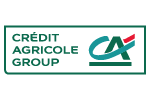
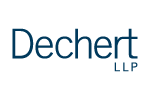
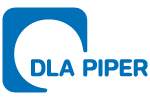
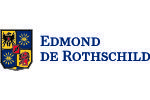
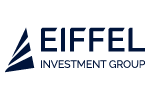


















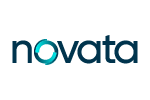











IPEM Content, Research & Knowledge Partners! 🏆

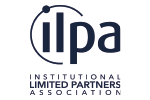
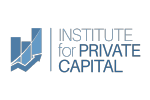


IPEM Industry Supporters! 🏆
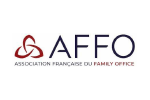









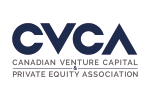



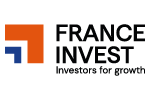



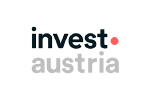




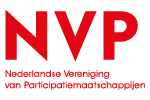





And IPEM Media Supporters! 🏆













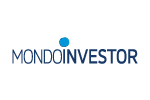











IPEM Paris 2023 – The Daily Spin, September 20th
Fill-in the information below to submit your event.
Fill in the information below to download the Survey.
Fill in the information below to download the Product Catalog.
Fill in the information below to download the Investor Package.
Fill in the information below to register as a journalist.
Fill in the information below to download the Factsheet.
Fill in the information below to download the Product Catalog.
Fill in the information below to download the list of firms.
Fill in the information below to download the LP Package.
Fill in the information below to download the Factsheet.
Fill in the information below to download the Wealth Discovery Package.
Fill in the information below to download the IPEM Playbook – Navigating the Wealth Revolution.
Fill in the information below to download the Factsheet.
Fill in the information below to download the Full Report.
Fill in the information below to download the Product Catalog.
Fill in the information below to download the IPEM LP Package 2025.
Fill in the information below to download the Program.
Fill in the information below to download the Product Catalog.
Fill in the information below to download the Factsheet.
Fill in the information below to download the Product Catalog.
Fill in the information below to download the Investor Package.